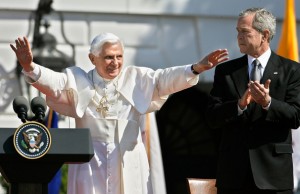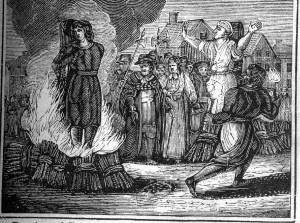President Obama once again conflated the Sandy Hook massacre with chronic gun violence in last night’s State of the Union speech:
in the two months since Newtown, more than a thousand birthdays, graduations, and anniversaries have been stolen from our lives by a bullet from a gun.
Two weeks ago in Minneapolis, he spoke of the need to “protect our kids and address the broader epidemic of gun violence in this country.” But Newtown-style mass shootings have almost nothing in common with garden-variety gun crime besides the use of a firearm, and the failure to distinguish them has resulted in overlooking the most effective means for reducing gun deaths.
Mass shootings, especially mass shootings of school children, are exceedingly rare. Identifying common causes and certain means of averting them is therefore difficult, and legislative fixes are likely to possess a high degree of over- and under-inclusion. Requiring federal background checks for private gun sales would not have kept guns out of the hands of Adam Lanza, while the NRA’s proposal to put an armed adult in every school across the U.S. wins the prize for the most absurd overreaction to the Sandy Hook tragedy.
The most common gun violence, by contrast, is drearily predictable and is the source on average of nearly ten thousand homicides a year. Such violence occurs overwhelmingly in certain locations of cities—over the past 30 years in Boston, for example, 75 percent of the city’s shootings occurred in 4.5% of its area, whereas 88.5 percent of the city’s street segments experienced not a single shooting. Urban shootings are retaliatory or the product of the most trivial of slights. They are committed by handguns, not assault rifles. Victims and perpetrators usually know each other, absent bullets going astray. Reforming the involuntary commitment laws and beefing up mental health services are largely irrelevant to these shootings, since though the shooters have serious problems with impulse control and are clearly a danger to themselves and others, few would be deemed mentally ill. And both victims and perpetrators are disproportionately minority, by huge margins. New York City is emblematic of the country’s gun violence. According to victims and witnesses, blacks commit 80% of all shootings in New York, though they are 23% of the city’s residents. Add Hispanics and you account for 98% of all shootings. Whites commit a little over 1% of shootings, though they are 35% of the city’s population. These disproportions pertain across the country.
The media loves to think of itself as a crusader for racial justice against the bigotry of red state Americans. Yet it pays little attention to black on black violence, compared to the ubiquity of such violence. Only in the extremely rare occasions when a black victim has been shot by a police officer or a white does it summon sustained outrage. This selective concern undoubtedly stems as much from reluctance to recognize the flip side of the black on black violence phenomenon—i.e., the high numbers of black perpetrators—as from any selective compassion.
While it is unclear how to prevent mass shootings–short of the unlikely event of removing all guns from the public—we know how to reduce urban violence: data-driven, proactive policing. New York has brought crime and homicide down an unmatched 80% since the early 1990s by identifying crime hot spots through the rigorous analysis of crime data, encouraging officers to lawfully use their discretion to question people about suspicious behavior, and holding police commanders accountable for crime on their watch. After a street shooting, officers will be deployed to the area in anticipation of a retaliatory hit, where they will look for behavior that indicates that someone is carrying a gun or that gang activity is afoot.
Gun control, however reasonable, has had only a limited effect on inner city gun violence, as the case of Chicago demonstrates. Proactive policing, on the other hand, is a demonstrable success, saving thousands of minority lives in New York over the last two decades. (Strengthening marriage, to increase the chance that sons grow up with their fathers, would also have an enormous effect on inner city shootings, but presents a much greater policy challenge.) Mass homicides are getting most of the attention at the moment, for the simple reason, frankly, that whites identify themselves with the victims, but the real problem of American gun violence lies elsewhere, and the solution to it within reach.
 The Indianapolis Star reports:
The Indianapolis Star reports:





